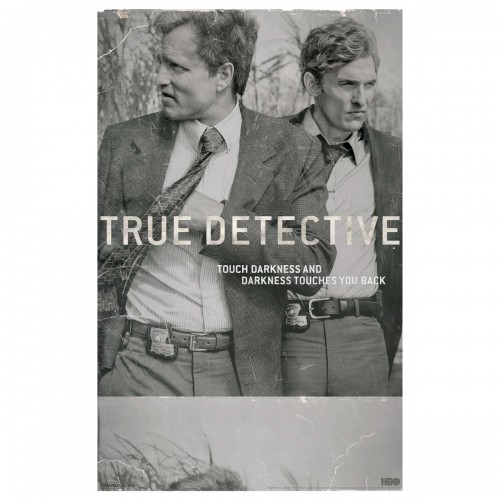Oct
22
Journal Post #6
October 22, 2014 | Leave a Comment
True Detective and the complex narrative
There has been multiple shows following the crime genre that preceded True Detective. Most of them popular, but were not quite as successful as what True Detective achieved in just one season despite being the same genre. How is that so? Easy, it is all in the narrative.
Crime shows like CSI, and Law & Order are popular because they engage their audiences with episodic journeys; stories that starts and ends at the same episode. Viewers don’t have to wait a whole week to find out who’s the killer, only to be made to wait for another week. These shows have no cliff-hangers since whatever crime that happens in an episode, are solved in that episode and viewers who are looking for to binge-watch TV shows dig these. But the downside of these shows is that they all have cheesy narratives, plots are annoyingly predictable, characters are too unrealistically smart, and the crime solving technologies used are ridiculous.
So ultimately, viewers who loves the crime genre, but cannot deal with the predictable and cheesy narrative of popular crime shows back then had nowhere to go for a show that both has both crime and quality stories in its package. Then came Nic Pizzolatto, who saw an opportunity in this market and introduced True Detective, the show which took the entire crime genre by storm. We learn that the show’s comprises of a complex narrative because it is thrown in our face in first episode of the first season. In the first episode, we the audience are constantly brought between series of scenarios that are happening at present to scenarios that happened in the narrative’s past, a viewer who does not pay their full attention to the show would have probably gotten lost in the first ten minutes. Not only that, subtle clues and meta narratives are placed in every episode of the show to point the viewers to the right direction to figure out the identity of the show’s serial killer. A viewer with a keen eye would be able to spot all these little easter egg-like clues, piece them together, and come up with their own theories on the the identity of the killer. Not only can the viewers watch and enjoy the show for what it is, they can play detective and be involved in the show’s narrative too. Therefore, shows like True Detective with a complex narrative demands high engagement from the viewers and keep them at the edge of the seat. Not paying attention means losing track of the narrative and having to play catch-up.
We see networks like HBO who are applying this formula into their shows, and to great success. Complex narrative is slowly becoming one of the main criteria for shows to be classified as Quality TV, and we can see why. The engaging narrative that demands the viewers’ attention, and the subtle placements of easter eggs and clues/hints that drives the narrative in its own way leave viewers wanting more of them as the weeks go on. You can not just watch one episode of True Detective and leave it at that, you will want to keep watching to find out more and more on the identity of the killer. Every week is like opening a box of chocolates to find out what you are going to get, and we are never left disappointed, only wanting more.
You must be logged in to post a comment.
